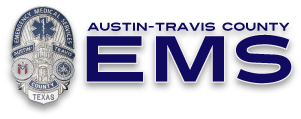 What is a Stroke?
What is a Stroke?
A stroke is an interruption of the blood flow to part of your brain. This can happen because of sudden bleeding or something blocking a blood vessel. When blood flow stops, brain tissue fed by those vessels will become injured, and may die if blood flow can’t be restored soon enough. And when brain cells die, they cannot be replaced or regrown.
This makes stroke a time-sensitive emergency. It’s important to quickly recognize a stroke, and call 911 right away to get the right care, right now, so its effects can be minimized.
How Do I Know When a Stroke is Happening?
Remember FAST to recognize a stroke:
F – Face drooping Does one side of the face droop or is it numb? Ask the person to smile. Is the person's smile uneven?
A – Arm weakness Is one arm weak or numb? Ask the person to raise both arms. Does one arm drift downward?
S – Speech difficulty Is speech slurred? Is the person unable to speak or hard to understand? Ask the person to repeat a simple sentence, like "The sky is blue." Is the sentence repeated correctly?
T - Time to call 911 If someone shows any of these symptoms, even if the symptoms go away, call 9-1-1 and get the person to the hospital immediately. Check the time so you'll know when the first symptoms appeared.
What Do We Do for a Stroke Patient?
When you call 911 for a stroke patient, there are things we will do specifically related to the possible stroke as part of caring for them.
Perform a Quick Assessment
There are a couple tests we do to see if someone is having a stroke.
Check the Patient's Blood Glucose
The first thing we do is test their blood sugar. Someone with low blood sugar can show all the signs of having a stroke. But unlike a stroke, we can fix the blood sugar problem on the scene.
This chart shows the percent of stroke patients with a documented blood glucose check every quarter.
Perform a Stroke Assessment
The next test is called the Cincinnati Prehospital Stroke Scale (CPSS). It’s a simple series of checks that paramedics use to assess whether someone is having a stroke.
If the patient has a good blood sugar level, and shows signs of a stroke on the CPSS test, then we call a “Stroke Alert” and get moving to the hospital.
Work Quickly
Stroke is a time-sensitive emergency, and there's little we can do for the patient on scene. They need care at a hospital that's equipped to assess and treat them. So we work to get the patient to the right hospital as quickly as we can.
Short Scene Times
We try to spend as little time as possible on scene with these patients. Since time is brain cells, we try to get moving quickly, with a goal of starting transport within 15 minutes of arriving at the patient’s side.
This chart shows how often we do that on a quarterly basis, measured in percent of stroke patients we encounter.
Rapid Transport to a Hospital
All told, we want to get potential stroke patients to the right care as quickly as we can. So we look at how long it takes us to get someone to the hospital from the time of the initial 911 call. Our goal is to make it to arrive at a Stroke Center within 45 minutes of the 911 call. There will be times where we can’t do that – for example, out in areas of Travis County that are a long distance from these specialized hospitals. But we still move as quickly as we can.
This chart shows the average time it takes us to get a stroke patient to the hospital from the time of the 911 call every quarter.
Transport to a Stroke Center
A Stroke Center is a hospital that is staffed and equipped around the clock to quickly diagnose and treat patients who might be having a stroke. We take Stroke Alert patients to the closest Stroke Center – even if it's not the hospital they would normally use.
This chart shows the percent of stroke patients who are transported to a stroke center every quarter.
Three hospitals currently are certified as Stroke Centers by the Office of the Medical Director:
-
Seton Medical Center
-
St. David's Medical Center
-
University Medical Center at Brackenridge
Working Together
When someone recognizes a possible stroke and calls 911, we can work together to minimize the problems associated with a “brain attack” and ensure the best possible outcome for the patient. We continually measure our performance in caring for stroke patients, and use our findings to improve the performance of the system as a whole. We also provide feedback to each of our providers so they can continue to provide high quality care. Our goal is to ensure that every patient receives the full spectrum of care every time.
Where to Learn More
More information about strokes is available from the American Stroke Association.
To learn more about our performance measures, contact the ATCEMS Business Analysis and Research team or visit our performance measure dashboard.

